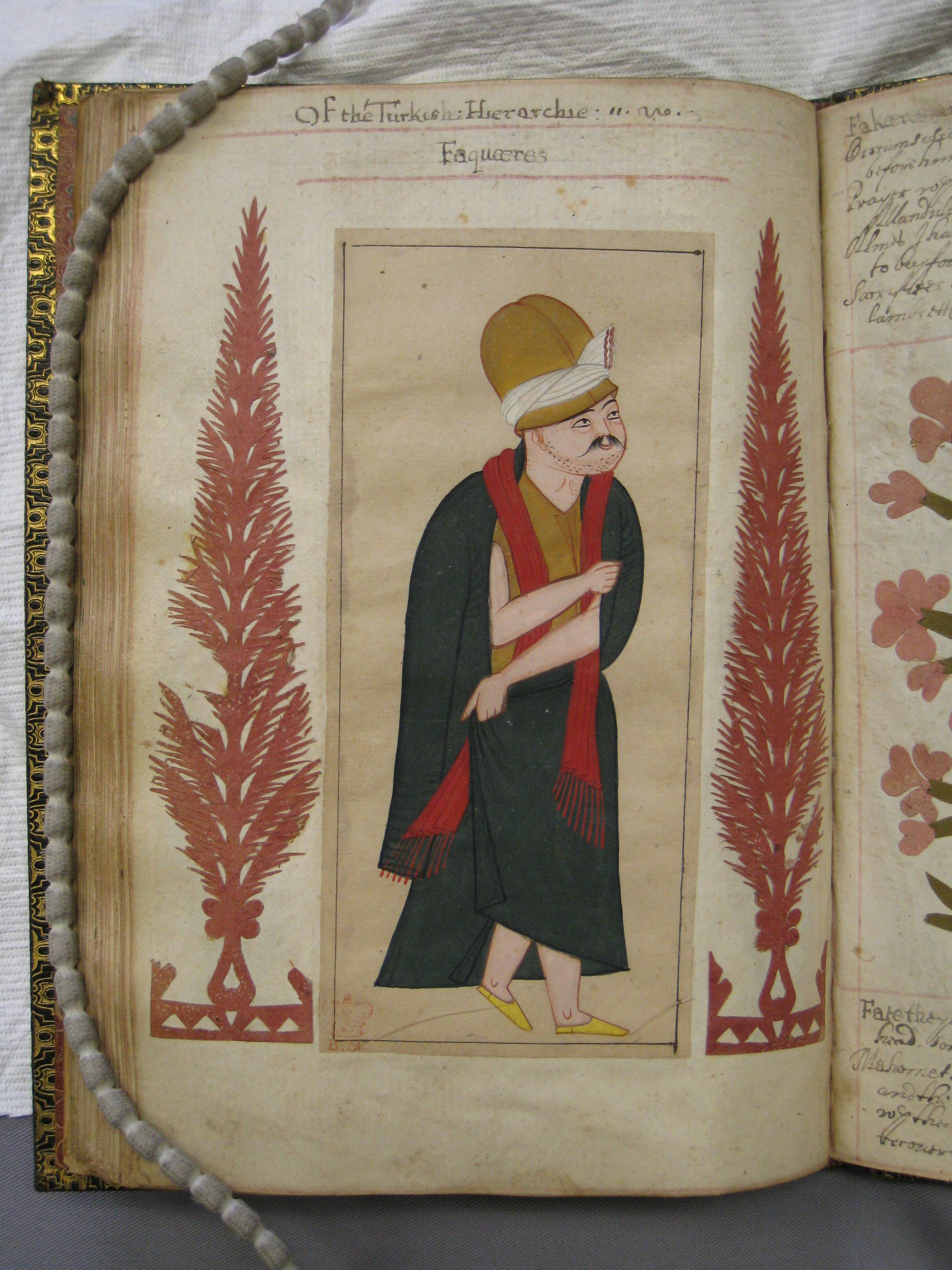Shown in a life-like way (or ‘no great art therein’): Ottoman costume albums and the art of self-representation
Thursday 16 January 2020, 6.30PM to 7.30pm
Speaker(s): Ünver Rüstem
Albums containing images of variously clothed Ottoman denizens abounded between the sixteenth and nineteenth centuries, produced for Western audiences who treated such compendia as reliable windows onto the Ottoman Empire’s very character. Although the genre originated with European travelling artists, local painters in Istanbul soon began creating their own rival albums for the stream of travellers and diplomats passing through their city, so that two broad categories of Ottoman-themed costume albums—one the work of Western artists, the other of Ottoman painters—coexisted in a mutually influential relationship over the centuries. My talk will focus on the Ottoman branch of this tradition, whose products I discuss as assertive forms of self-representation rather than, as has often been assumed, derivative commercial works that simply pandered to foreign expectations. Skilfully catering to Western tastes in Islamic pictorial terms, these albums relied upon stock types that were incrementally modified with shifting sartorial and artistic fashions, all the while responding to, and in turn reshaping, European visions of the ‘Turk’. The late eighteenth and nineteenth centuries, however, brought significant challenges to the albums’ visual appeal and distinctiveness, not only because Ottoman painting moved to a style closer to Western naturalism, but also because Ottoman costume itself was streamlined and simplified with a series of dress reforms beginning in the 1820s. In this changed aesthetic context, new modes of sartorial self-representation—including photography and costume exhibitions—emerged to serve the empire’s modernizing image, building on the themes and strategies that the earlier albums had so successfully deployed during the preceding centuries.
About the speaker
Ünver Rüstem
Ünver Rüstem is Assistant Professor of Islamic Art and Architecture at Johns Hopkins University. His research centres on the Ottoman Empire in its later centuries and on questions of cross-cultural exchange and interaction. Having received his PhD from Harvard University, he has held fellowships at Columbia University, the University of Cambridge, and Harvard University. He is the author of Ottoman Baroque: The Architectural Refashioning of Eighteenth-Century Istanbul (Princeton University Press, 2019) and has published articles and chapters on subjects ranging from the reception of illustrated Islamic manuscripts to the symbolic deployment of ceremonial in the context of Ottoman architecture. At present, he is working on a new book project that explores the role of costume in Ottoman interactions with Western Europe during the early modern and modern periods.
Location: Bowland Auditorium, Berrick Saul Building
Admission: Free admission, booking required

